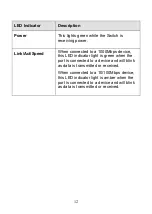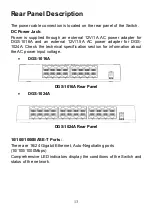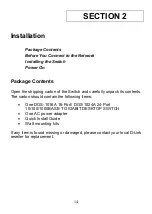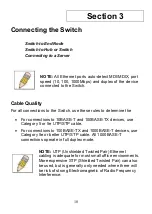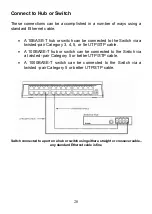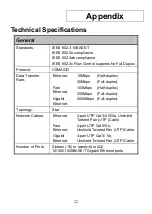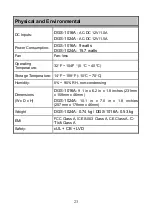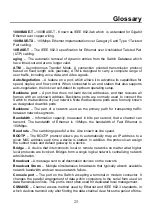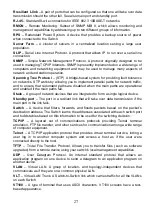
When two devices transmit simultaneously, a collision occurs and the colliding devices
delay their retransmissions for a random amount of time.
Data Center Switching
– The point of aggregation within a corporate network where a
switch provides high-performance access to server farms, a high-speed backbone
connection, and a control point for network management and security.
Ethernet
– A LAN specification developed jointly by Xerox, Intel, and Digital Equipment
Corporation. Ethernet networks operate at 10Mbps using CSMA/CD to run over cabling.
Fast Ethernet
– 100Mbps technology based on the Ethernet/CD network access
method.
Flow Control
– (IEEE 802.3z) A means of holding packets back at the transmit port of
the connected end station. Prevents packet loss at a congested switch port.
Forwarding
– The process of sending a packet toward its destination by an
internetworking device.
Full-duplex
– A system that allows packets to be transmitted and received at the same
time and, in effect, doubles the potential throughput of a link.
Half-duplex
– A system that allows packets to be transmitted and received, but not at
the same time. Contrast with
full-duplex
.
IP address
– Internet Protocol address. A unique identifier for a device attached to a
network using TCP/IP. The address is written as four octets separated with full-stops
(periods), and is made up of a network section, an optional subnet section and a host
section.
IPX
– Internetwork Packet Exchange. A protocol allowing communication in a NetWare
network.
LAN
– Local Area Network. A network of connected computing resources (such as PCs,
printers, servers) covering a relatively small geographic area (usually not larger than a
floor or building). Characterized by high data rates and low error rates.
Latency
–
The delay between the time a device receives a packet and the time the
packet is forwarded out of the destination port.
Line speed
– See
baud rate
.
Main port
– The port in a resilient link that carries data traffic in normal operating
conditions.
MDI
–
Medium Dependent Interface. An Ethernet port connection where the transmitter
of one device is connected to the receiver of another device.
MDIX
– Medium Dependent Interface Cross-over. An Ethernet port connection where
the internal transmit and receive lines are crossed.
MIB
– Management Information Base. Stores a device’s management characteristics
and parameters. MIBs are used by the Simple Network Management Protocol (SNMP)
to contain attributes of their managed systems. The Switch contains its own internal
MIB.
Multicast
– Single packets copied to a specific subset of network addresses. These
addresses are specified in the destination-address field of the packet.
Protocol
– A set of rules for communication between devices on a network. The rules
dictate format, timing, sequencing, and error control.
26

